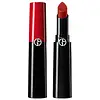Westman Atelier Squeaky Clean Liquid Lip Balm Versus Armani Beauty Lip Power Long Lasting Satin Lipstick
What's inside
What's inside
 Key Ingredients
Key Ingredients

 Benefits
Benefits

 Concerns
Concerns

 Ingredients Side-by-side
Ingredients Side-by-side

Diisostearoyl Polyglyceryl-3 Dimer Dilinoleate
EmollientRicinus Communis Seed Oil
MaskingOctyldodecanol
EmollientPrunus Amygdalus Dulcis Oil
Skin ConditioningHydrogenated Vegetable Glyceride
EmollientSimmondsia Chinensis Seed Oil
EmollientMica
Cosmetic ColorantParfum
MaskingTocopherol
AntioxidantButyrospermum Parkii Butter
Skin ConditioningArgania Spinosa Kernel Oil
EmollientHelianthus Annuus Seed Oil
EmollientLimonene
PerfumingCitral
PerfumingLinalool
PerfumingCitronellol
PerfumingCI 77891
Cosmetic ColorantCI 77491
Cosmetic ColorantCI 77492
Cosmetic ColorantCI 77499
Cosmetic ColorantCI 75470
Cosmetic ColorantCI 77742
Cosmetic ColorantCI 15850
Cosmetic ColorantDiisostearoyl Polyglyceryl-3 Dimer Dilinoleate, Ricinus Communis Seed Oil, Octyldodecanol, Prunus Amygdalus Dulcis Oil, Hydrogenated Vegetable Glyceride, Simmondsia Chinensis Seed Oil, Mica, Parfum, Tocopherol, Butyrospermum Parkii Butter, Argania Spinosa Kernel Oil, Helianthus Annuus Seed Oil, Limonene, Citral, Linalool, Citronellol, CI 77891, CI 77491, CI 77492, CI 77499, CI 75470, CI 77742, CI 15850
Trimethylsiloxyphenyl Dimethicone
Isohexadecane
EmollientOctyldodecyl Neopentanoate
EmollientPolyethylene
AbrasiveHydrogenated Styrene/Methylstyrene/Indene Copolymer
Synthetic Fluorphlogopite
Vp/Hexadecene Copolymer
Hydrogenated Polyisobutene
EmollientAcrylic Acid/Isobutyl Acrylate/Isobornyl Acrylate Copolymer
CI 77891
Cosmetic ColorantParaffin
PerfumingCera Microcristallina
Emulsion StabilisingVp/Eicosene Copolymer
Mica
Cosmetic ColorantSynthetic Wax
AbrasiveCI 77491
Cosmetic ColorantCI 77492
Cosmetic ColorantCI 77499
Cosmetic ColorantPentaerythrityl Tetra-Di-T-Butyl Hydroxyhydrocinnamate
AntioxidantCI 15850
Cosmetic ColorantAluminum Hydroxide
EmollientSilica
AbrasiveTocopherol
AntioxidantTrimethylsiloxyphenyl Dimethicone, Isohexadecane, Octyldodecyl Neopentanoate, Polyethylene, Hydrogenated Styrene/Methylstyrene/Indene Copolymer, Synthetic Fluorphlogopite, Vp/Hexadecene Copolymer, Hydrogenated Polyisobutene, Acrylic Acid/Isobutyl Acrylate/Isobornyl Acrylate Copolymer, CI 77891, Paraffin, Cera Microcristallina, Vp/Eicosene Copolymer, Mica, Synthetic Wax, CI 77491, CI 77492, CI 77499, Pentaerythrityl Tetra-Di-T-Butyl Hydroxyhydrocinnamate, CI 15850, Aluminum Hydroxide, Silica, Tocopherol
Ingredients Explained
These ingredients are found in both products.
Ingredients higher up in an ingredient list are typically present in a larger amount.
Ci 15850 is the pigment color red. It is an azo dye and created synthetically.
Azo dyes need to be thoroughly purified before use. This allows them to be more stable and longer-lasting.
This ingredient is common in foundations, lipsticks, and blushes. This color is described as brown/orangey red.
It has many secondary names such as Red 6 and Red 7. According to a manufacturer, Red 6 usually contains aluminum.
Learn more about CI 15850Ci 77491 is also hydrated iron III oxide. It's sole purpose is to give a red/pink hue to products.
Iron III oxides are classified as inorganic chemicals for coloring.
Synthetically created Ci 77491 is considered safer than those naturally found. This is because the synthetically created version may contain less impurities. Iron oxides are generally non-toxic and non-allergenic.
Learn more about CI 77491Ci 77492 is also hydrated iron III oxide. It's sole purpose is to give a yellow hue to products.
Iron III oxides are classified as inorganic chemicals for coloring.
Synthetically created Ci 77492 is considered safer than those naturally found. This is because the synthetically created version may contain less impurities. Iron oxides are generally non-toxic and non-allergenic.
Learn more about CI 77492Ci 77499 is also hydrated iron III oxide. It is created from mixing red and black iron oxides. This helps give shades of darkness to a product.
Iron III oxides are classified as inorganic chemicals for coloring.
Ci 77891 is a white pigment from Titanium dioxide. It is naturally found in minerals such as rutile and ilmenite.
It's main function is to add a white color to cosmetics. It can also be mixed with other colors to create different shades.
Ci 77891 is commonly found in sunscreens due to its ability to block UV rays.
Learn more about CI 77891Mica is a naturally occurring mineral used to add shimmer and color in cosmetics. It can also help improve the texture of a product or give it an opaque, white/silver color.
Serecite is the name for very fine but ragged grains of mica.
This ingredient is often coated with metal oxides like titanium dioxide. Trace amounts of heavy metals may be found in mica, but these metals are not harmful in our personal products.
Mica has been used since prehistoric times throughout the world. Ancient Egyptian, Indian, Greek, Roman, Aztec, and Chinese civilizations have used mica.
Learn more about MicaTocopherol (also known as Vitamin E) is a common antioxidant used to help protect the skin from free-radicals and strengthen the skin barrier. It's also fat soluble - this means our skin is great at absorbing it.
Vitamin E also helps keep your natural skin lipids healthy. Your lipid skin barrier naturally consists of lipids, ceramides, and fatty acids. Vitamin E offers extra protection for your skin’s lipid barrier, keeping your skin healthy and nourished.
Another benefit is a bit of UV protection. Vitamin E helps reduce the damage caused by UVB rays. (It should not replace your sunscreen). Combining it with Vitamin C can decrease sunburned cells and hyperpigmentation after UV exposure.
You might have noticed Vitamin E + C often paired together. This is because it is great at stabilizing Vitamin C. Using the two together helps increase the effectiveness of both ingredients.
There are often claims that Vitamin E can reduce/prevent scarring, but these claims haven't been confirmed by scientific research.
Learn more about Tocopherol